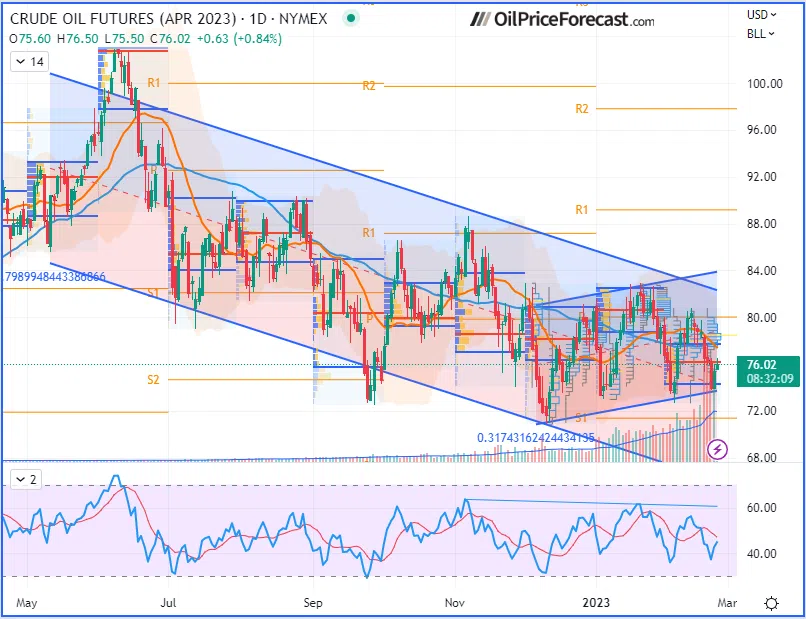Oil Rises Despite Larger US Crude Stocks. Russian Production Worries
Crude oil prices continued to rise after reports from the financial press suggested a larger-than-expected drop in Russian production.
The two global crude benchmarks are still enjoying momentum that began on Thursday – despite larger-than-expected US crude inventories – following reports from the financial press that Russia will cut oil exports from its western ports by 25% per month in March compared to February in response to Western sanctions.
These claims, however, have not yet been confirmed by the Russian Ministry of Energy.
The western ports of Primorsk, Ust-Luga, and Novorossiysk export around 2.5 million barrels of crude a day. Therefore, a 25% reduction would imply a reduction in exports of 625,000 barrels per day, or about 0.6% of the world oil supply.
This contraction would thus exceed that announced by the Russian Deputy Prime Minister in charge of Energy, Alexander Novak, earlier in February by 500,000 barrels per day.
In addition to the disruptions in supply from Russia, there is also growing demand from China and India, which might show signs of a market that could become even more tight.
United States Crude Oil Inventories


Commercial crude oil reserves posted another strong weekly rise last week in the United States, according to figures from the US Energy Information Agency (EIA), marking their ninth consecutive increase.
These commercial stocks rose by 7.6 million barrels, well above the 2.8 million barrels forecast by analysts.
This new increase in crude oil reserves should have a downward effect on prices, but it reflects lower refinery activity due to the infrastructure maintenance season. On the other hand, it was accompanied by a decline in gasoline stocks:
United States Gasoline Inventories


The pressure on the supply of distilled products can be explained by the relatively mild winter weather both in the United States and in Europe.
However, recession fears continue to dominate the market – thus capping crude's gains – as major central banks continue to send signals that further interest rate hikes are in sight amid high inflation.
Charting and Analysis

On a macroeconomic level, the US dollar index (DXY/USDX) is returning to $105 territory, with the next quarterly pivot target of $107 if the index breaks above 105.631 (its previous swing high), as I mentioned in my previous article that such a breakout could be a sign of stronger bullish enthusiasm.

On the West Texas Intermediate (WTI) crude oil April 2023 futures contract, the bears gave up just on the lower side of the short-term regression channel, thus decreasing chances of a breakout below the short-term regression channel (the small one encompassed into the larger one). Now, as the market recovers, it is probably aiming towards the quarterly pivot located around the $80 psychological level as the next target.
Have a nice weekend!
Sebastien Bischeri,
Oil & Gas Trading Strategist